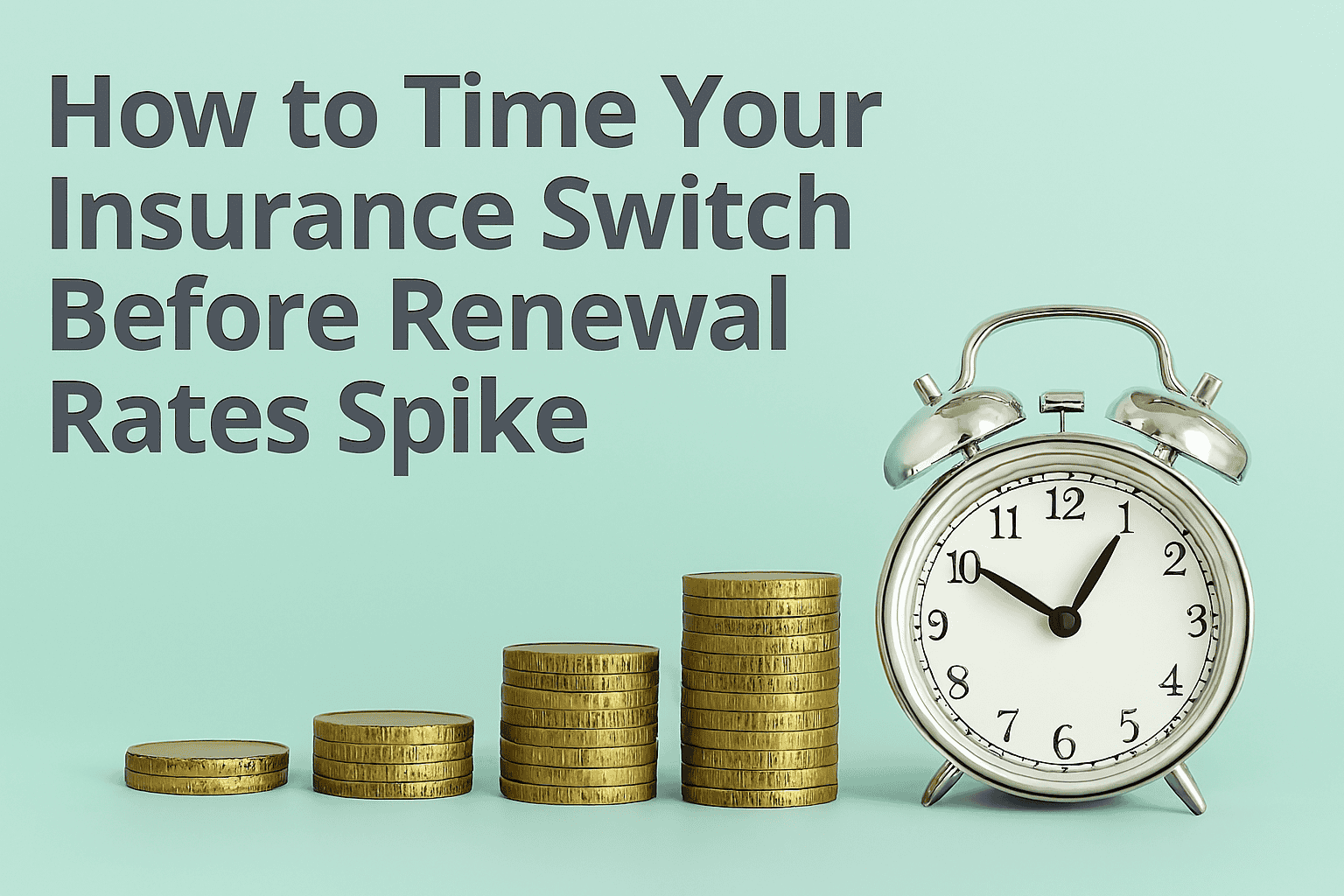Switching your insurance before your renewal date can save you money by locking in lower rates, avoiding loyalty-based price hikes, and adjusting your coverage to better match your current needs. Many insurers raise premiums at renewal, even if you have not filed a claim. By comparing quotes early and switching at the right time, you can avoid those increases and potentially find better discounts or coverage options elsewhere. Acting before the renewal spike gives you more control over your costs and helps you avoid overpaying for the same protection.
This guide explains how to track renewal cycles, compare quotes early, and avoid common mistakes that cost you more in the long run.
Why Renewal Rates Increase
Insurance companies adjust rates based on risk, inflation, claims history, and market trends. Even if you have not filed a claim, your premium may rise due to:
- Regional weather patterns or natural disasters
- Higher repair or medical costs
- Changes in underwriting rules
- Company-wide pricing updates
These adjustments often hit at renewal time. If you wait until your policy renews, you may be stuck with the new rate, or face a gap in coverage while switching.
Know Your Renewal Date
Start by checking your current policy. Most auto, home, and renters insurance policies renew every six or twelve months. Your renewal date is listed on your declarations page or billing statement.
Mark that date on your calendar. Set a reminder 45 to 60 days before it. That gives you time to shop around, compare quotes, and make a decision before rates change.
Start Comparing Early
Do not wait for the renewal notice. Begin comparing quotes at least six weeks before your policy ends. That gives you time to:
- Review your current coverage
- Identify gaps or extras you do not need
- Get quotes from multiple providers
- Ask questions and read the fine print
Many insurers offer quotes that are valid for 30 days. Locking in a rate early may protect you from upcoming increases.
Watch for Loyalty Penalties
Staying with the same insurer too long can backfire. Some companies use “price optimization,” which means they charge loyal customers more over time, assuming they will not shop around.
Even if your coverage has not changed, your premium might creep up each year. Comparing quotes regularly helps you spot these increases and avoid overpaying.
Avoid Gaps in Coverage
When switching, make sure your new policy starts the same day your old one ends. A gap, even one day can cause problems. You may lose discounts, face penalties, or be flagged as high-risk.
Ask your new insurer to confirm the start date in writing. Cancel your old policy only after the new one is active. Keep proof of both policies in case questions come up later.
Consider Bundling Options
If you have multiple policies ask about bundling. Many insurers offer discounts for combining coverage. That can lower your overall cost and simplify billing.
Still, do not assume bundling is always cheaper. Compare bundled and separate quotes to see which works best for your situation.
Review Your Coverage Needs
Before switching, take time to review what you actually need. Life changes like moving, buying a car, or starting a business may affect your coverage.
Ask yourself:
- Do I need higher liability limits?
- Is my deductible too high or too low?
- Are there discounts I am missing?
- Has my credit score improved?
Updating your coverage before switching helps you get accurate quotes and avoid surprises later.
Use Online Tools and Agents
Online quote tools make it easy to compare rates quickly. You can enter your info once and see offers from multiple companies. Still, talking to an agent may help if your situation is complex.
Independent agents work with several insurers and can explain differences in coverage. They may also help you find discounts or special programs you did not know about.
Insurance Switch Timing Matters
The best time to switch is before your renewal date, ideally 30 to 60 days ahead. That gives you time to compare options, lock in a better rate, and avoid last-minute stress. Waiting until your premium goes up limits your choices and may cost you more.
Insurance switch timing does not need to be a hassle. With a little planning, you can avoid rate hikes, improve your coverage, and save money. Start early. Mark your renewal date. Compare quotes before the spike hits.




